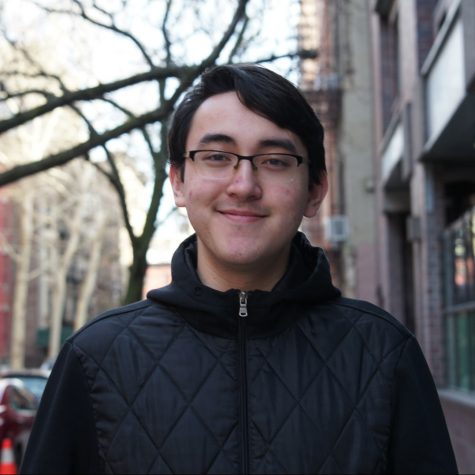The Two Worlds of a ‘Cage Fighter’
Joe Carman throws a punch in Jeff Unay’s new documentary, “The Cage Fighter,” now showing at the IFC Center on Sixth Avenue.
February 5, 2018
Joe Carman has a secret. A retired mixed martial arts fighter and the subject of Jeff Unay’s new documentary “The Cage Fighter,” Joe has broken the promise he made to his family to stay out of the ring, sneaking out at night to train.
But Joe’s secret can only stay hidden for so long. When he comes home from his first match since retirement with a black eye, his wife Norinda and his four daughters are incredulous and furious that he’s broken the promise he made to them. Having just celebrated his 40th birthday, they worry about the physical toll fighting has already taken and will continue to take on his body.
“What’s gonna happen when you’re 45 and in a wheelchair?” one of his older daughters asks.
When Joe loses a fight to a younger up-and-comer, he initially shakes it off, but quickly grows obsessed with settling the score in a rematch. He promises his family it will be his last fight, but they’re not so sure.
“You’re gonna do what you want and that’s that,” says Norinda.
“The Cage Fighter” is a quite physical film and can be difficult to watch at times — like when Joe collapses during training and can’t get back up, or when, in a fight, his opponent punches him in the face over and over, relentlessly. But this physicality is primarily conveyed through sound. Watching Joe train and fight is one thing, but hearing the dull thud of a body being thrown to the ground, or the visceral, crunching thump of a fist connecting is something else entirely.
The documentary is shot and edited much like a narrative film, and its subjects never address the cameras or the filmmakers’ presence, making one wonder, before the truth comes out, why Joe’s family thought they were there. During fight scenes, the camera, pressed up against the chain-link fencing of the cage, hovers close to the action. But Unay, who also shot the film, takes care to capture the facial expressions and emotions of Joe and his family when he’s out of the ring as well.
Why does Joe keep fighting? He knows he’s hurting the ones he loves, but he can’t seem to stop, even after Norinda threatens to leave him and take the kids with her. She wonders if he’s trying to make his father proud, or if he’s trying to use fighting as a way to regain control of his life. But the film doesn’t try to explain Joe, simply using his actions and words to tell his story. Joe says that when he’s fighting in the ring it’s “the only time I like myself.”
A moving and difficult meditation on the responsibilities we have for ourselves and for our families, “The Cage Fighter” is a knockout.
“The Cage Fighter” is now playing at the IFC Center, a five-minute walk from Washington Square Park.
A version of this article appeared in the Feb. 5 print edition. Email Alex Cullina at [email protected].


























































































































































